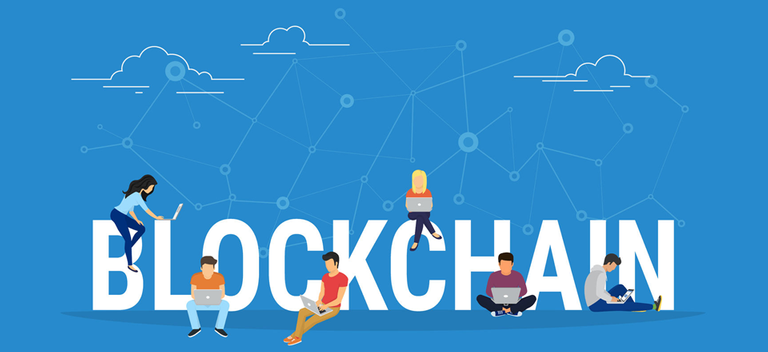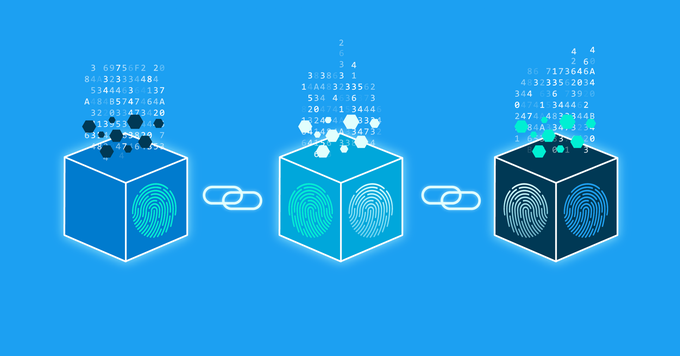
Soneshwar Singh CTO - Bient Technologies
Blockchain and Crypto have successfully become the biggest trend in the technological ambit of 2018. However, the movement is falling short of a mass momentum and comprises only of active crypto community acting as the fuel cells of this technology. Demystifying all fog of confusion for new Crypto users, or people who are not quite convinced about this technology due to lack of knowledge, we bring you a masterclass from Mr Soneshwar Singh, Chief Technical Officer of Bient Technologies. In this article, Mr Singh is going to walk our readers through a step-by-step process into the depth of the ecosystem.

What is Blockchain?
Blockchain, as the word explicitly says, is chain of blocks. Blocks here are basically a bundle of transactions that are bound together and mined to a single block and the block itself is stacked in the chain.
Transactions in the blockchain world are instructions that are performed, whether it be a function execution, a remote procedure call, a data storage request, a computation request, or a transaction of currency.
The word Blockchain is creating a ruckus on the internet and still most of the population is not able to understand even part of the concept. Most of our theories and logics are based on real life problems and their solutions, so let us take a look on blockchain tech from a real perspective and maybe that will help a lot of people to understand.
Why Blockchain?
Imagine you have a business and you are selling some things for a paper that has a value in your country. That is your fiat currency. You have to pay for taxes, fuel, food, water, travel and almost everything by giving a certain value in form of that paper note in your ecosystem. So basically the money is always moving but what we are left with is the hassle with which the money keeps on moving.
You sell some supplies to earn a 100 unit value of your currency, then you go on to buy stuff with that 100 unit value from a store ‘A’, which in turn uses that money to buy some stuff from store ‘B’. Finally, the store ‘B’ owner comes back to you to buy some stuff for a value of 100 units and you come to realise that finally what you did was move your stuff to get what you need and the paper note eventually came back to you.
This problem was realized by the organisations who developed paperless modes of money flow. They started maintaining a ledger of all the transaction that happened during the day and finally settle the score on who gets to hold the paper notes at the end of the day or week or a certain period of time.
Blockchain made us realise that no one really needs to hold the note They are just fragile pieces of paper that can get destroyed and they are controlled by the people in power and can be generated as much as they want and we as laypeople know nothing behind that mechanism.
Therein entered the digital currency, a subset of which are cryptocurrencies which actually maintained a ledger for you and that ledger was kept in every person’s desktop that wanted to have a full wallet setup with all the functionalities, thereby contributing in the blockchain’s replication and survival. There is no central authority to control that. This means that there is no one who could just change the currency supply and demand.
So now we know that all blockchain does is simply store our data of transactions in blocks that are rolled up together and pushed up the shelf.

What are the Benefits of Blockchain?
Now, you have some ledger pages, with each page containing a page number and a code at the end of the page that helps you to arrange them in order. These codes and page numbers follow a pattern and are unique so that you always know when a page is missing or wrongly arranged. Now all that you are left with is the fear of losing any page, distrust of people whose transactions you are holding in the ledger, and the availability of data if you are not around.
You think of an idea to share copies of your ledger to a few of your clients who want to volunteer and you have solved the problem of availability, trust and data loss. Now people are trusting since the data can’t be faked because now multiple people are holding it. But now you are left with another, bigger problem: forgery of data. You come up with an idea of a consensus between the members who hold the ledger. A simple consensus is set to a two-thirds majority vote on data shows that the data is correct.
Now comes the last big problem. It might be a worst case scenario but it is entirely possible. If two-thirds of all members were corrupted and were just waiting to get their hands on the data, the consensus would be hacked. So what you do is try to build the code on the bottom of your page using a formula that actually digests the value to get the code. To better understand it, here is a demonstration of what we can generate using 2 inputs (2 and 4) and different formulae
2 + 4 = 6 | 2 - 4 = -2 | 2 x 4 = 8 | 2 / 4 = 0.5
But if I were to give you an answer instead of a question, and ask you to figure out the question, it would require some major math skill and luck to find out the right question. Say, I give you the number ‘8’ and ask you to find out the ways you can make ‘8’ while also keeping the operator as a variable instead of constant.
4+4 | 5+3 | 20-12 | 1+5+4-2 | … and a million others
You will see that people will get millions of different possibilities of getting the number ‘8’. So now your ledger is distributed and copied to several other members. You are constantly available with the data because you have been replicated and one of your replications will always be available. You are now more transparent as any one of your members can volunteer to hold the data. And lastly, you have solved the problem of data forgery by replacing the code along with the page number by a formula that will automatically generate a code in a specific pattern using the transactions on the page as inputs and calling the page a block in the long chain of blocks known as the the ledgerbook.
The code becomes transaction hash and the page number becomes block-number.
How to do Transactions on the Blockchain Function?

Now you have properly handled the ledger with all the blocks in it which is constantly at sync with each peer. Now you want to see how you can solve problems for the people. You start to think on what else can you save in this ledger that will be a short precise information, would follow a pattern and be very helpful. You come up with the idea of storing bonds or contracts between the people by using the contract serial number on the ledger with the creator’s information.
Now a contract can be anything varying from land registry, voting system, escrow to even a gold storage or a loan settlement. Now instead of actually creating a contract of a land every time it is sold or purchased you can just transfer it in ledger like a currency and you know it can’t be falsified because of your previous security measures. Now the executor of the contract becomes the sender for the ledger and receiver is always the contract and when contract receives a new holder name it changes its owner in the database.
So the transactions are now not only the transfer of money. Any operation performed on the ledgerbook is termed as a transaction and logged into your block before binding it to the chain.
If one can understand this simple idea, they do not need to look any further to realise that this is the greatest revolution of the century, following in the footsteps of the World Wide Web revolution of the last century
Nice article
The future of payment is here.Thanks Blockchain Tecnology